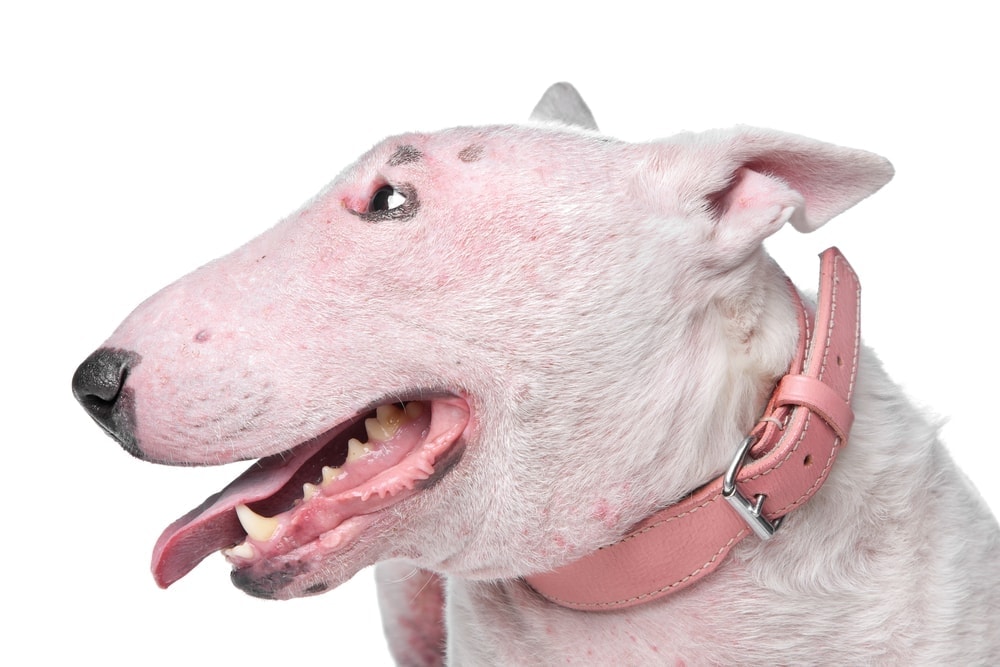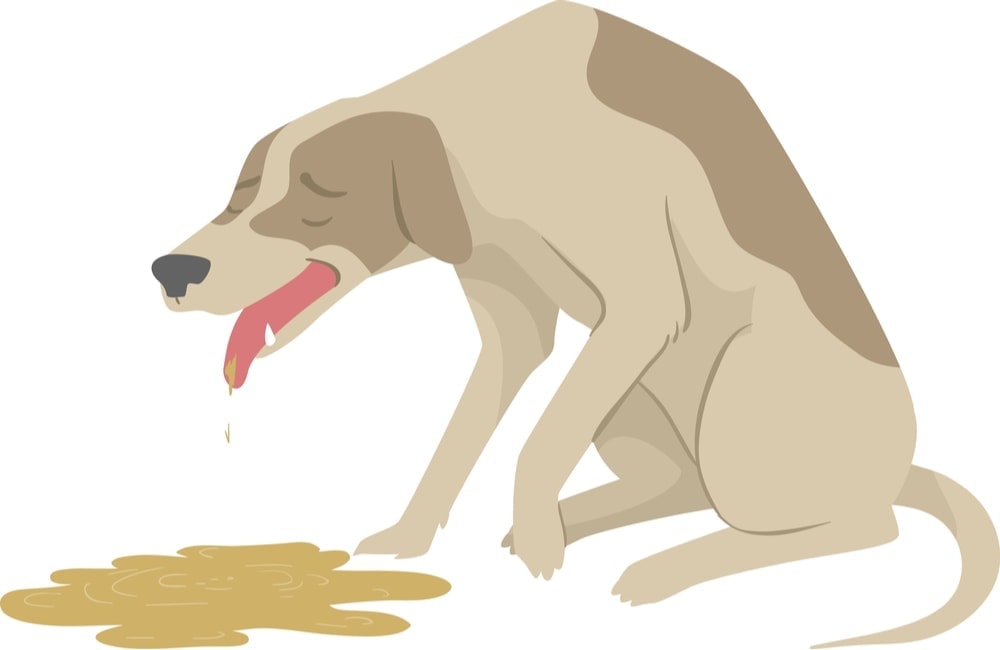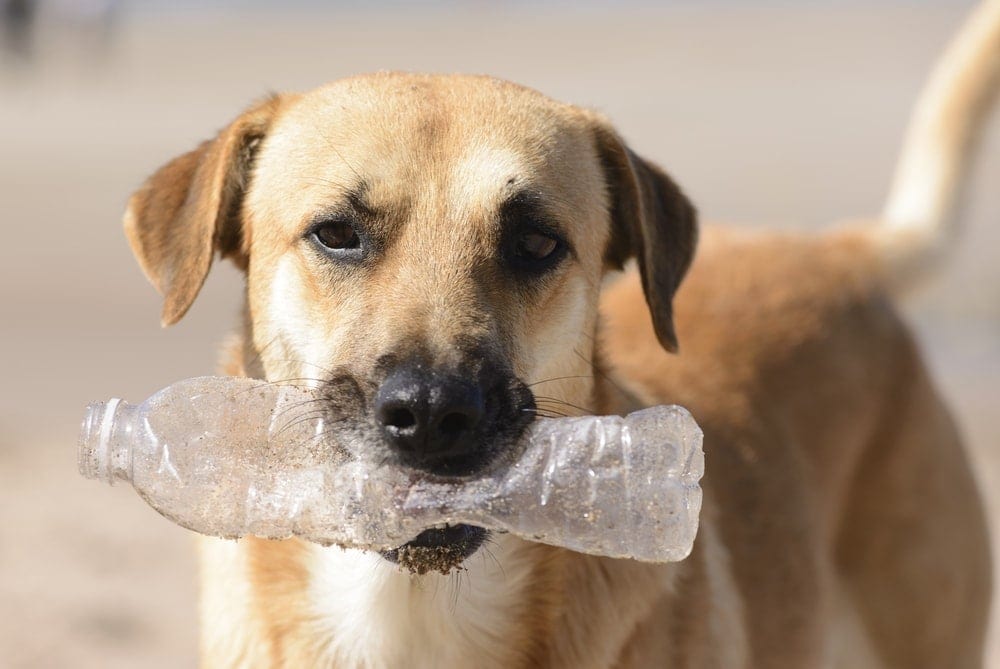There are a variety of skin conditions that a dog can develop throughout its life. Having a small crusty scab is normal and usually means just a scratch. But there are some situations when better to see your vet to be sure that all is good. Let’s find out more.
If a human or animal cuts or scratches its skin, special cells called platelets are glued together to stop bleeding. When they become dry you can see or feel scabs. The problem comes when a lot of scabs are together in a place without any visible wound – then it could be a disease. If it is not a scratch, why does my dog has crusty scabs on his back and neck?
Only vets can make the right diagnosis. The most common reason for crusty scabs is allergic dermatitis on food, cosmetics, or plants. In the more rare cases, it could be a fungal infection, bacterial infection, or parasites. Yeast infection or poor diet can cause problems with your dog’s skin.
Hormonal imbalance can cause crusty crabs on your dog’s skin as well. Hormone imbalances can be the precursor to certain diseases like hypothyroidism, Cushing’s Disease, and even some more serious health issues like tumors. We recommend to contact your vet and make skin biopsy to find out the exact reason.
Some of these blemishes are more serious than others. It is important for you to familiarize yourself with some of these conditions so you can recognize them in your pet. Find out more in the following article.
1. Fungal Infection
Fungal infection or fungus could be responsible for the crusty scabs that you’ve noticed on your dog’s back. Ringworm is the result of a fungal infection, and it can cause severe skin irritation. This sometimes results in scabs, bumps, or even hair loss.
Ringworm and other fungal infections can be very serious, so they should not be viewed lightly. If your dog has patches of scaly, scabbed over the skin, there is a chance that they have this type of infection.
Your veterinarian will be able to prescribe a medication that should get rid of the ringworm quite effectively. The longer you wait to seek out treatment for your dog, the worse it will become.
2. Allergies
An allergic reaction is another possible explanation for the scabs on your dog’s back. Dermatitis is a condition that results from exposure to an irritant of some kind. Dogs can be allergic to lots of different things, so it can be difficult to identify the source but the most common are food allergies or environmental allergies.
It may be necessary for you to take your dog to the vet to have an allergy test performed. Some of the other symptoms of an allergic reaction include itching, bumps, red/irritated skin, and hair loss.
3. Bacterial Infection
Your dog’s scabby skin could be caused by a bacterial infection. Folliculitis is a condition that can cause scabs, sores, bumps, and hair loss in dogs. It is caused by a bacterial skin infection, which may result from some underlying health problems.
Dogs sometimes develop bacterial infections because they are biting at their skin, which can result in parasites like fleas or ticks. This can result in open wounds that become infected with certain types of bacteria.
A bacterial infection can be fairly mild or severe, depending on the case and how long it is left untreated. If you notice any signs of such an infection with your dog, it is crucial that you take them to the vet right away. A course of antibiotics will likely clear up the infection without any complications.
4. Parasites
Parasites like fleas and ticks can wreak havoc on your dog’s skin, causing scabs and all sorts of lesions. While it is not uncommon for dogs to contract these types of parasites, it is serious and requires immediate treatment.
Fleas are the most common parasite for any dog to face. Home dogs should get regularly medicines to avoid flea infestation. Their ability to hide in carpets, bedding, and backyards, basements increases the chances of excessive flea bites.
There are a variety of ways to treat ticks and fleas on dogs, most of which work very well. A flea collar is a good way to keep these parasites off your pooch.
If your dog has ticks, you should be able to see them as they become larger and filled with blood. You can use some tweezers to get these parasites off your dog. Make sure that you don’t pull too hard on them, as the head could be left stuck under their skin. This could, in turn, lead to a bacterial infection.
Scabies mites can also cause crusty scabs on your dog’s back and cause such sickness as sarcoptic mange. Keep in mind that scabies can be transferred from dogs to humans, so it is important that they are thoroughly destroyed. Your veterinarian will be able to help you out with this.
Demodex mites survive and thrive in a dog’s hair follicles, causing a disorder name demodectic mange, which a quite an issue for any pet owner.
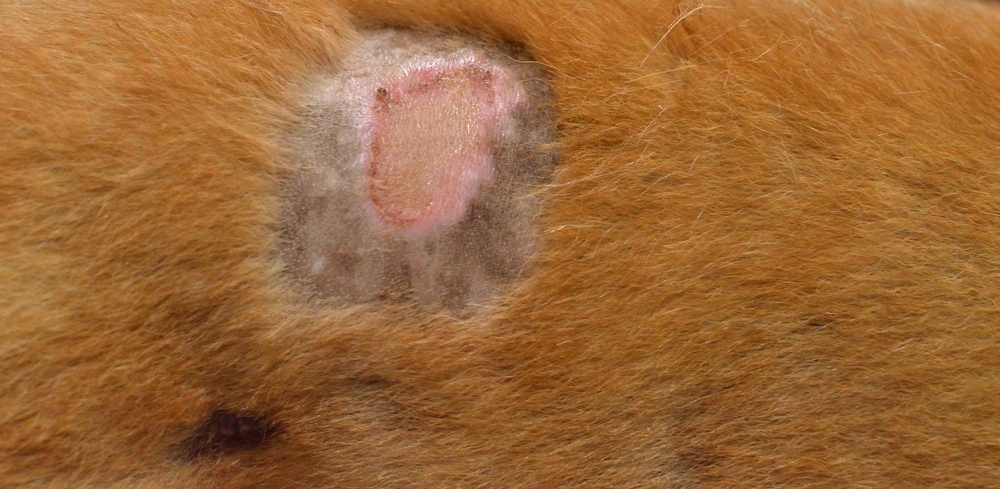
5. Poor Diet
Dogs have been known to develop scabs on their skin due to a nutritional deficiency caused by a poor or improper diet. This is just one of the many reasons why it is so important for you to give your dog the right type of food. You need to make a point of looking for a reputable brand that uses natural, high-quality ingredients. Poor nutrition lacking proper minerals, fatty acids, omega, and vitamins in their diet can cause a dog to develop skin irritation, rashes, and itchiness, leading to sores and scabs on the dog’s skin.
If your dog is not getting all of the nutrients it needs to stay healthy, its immune system can become compromised. This opens your dog up to all sorts of infections and other issues that can affect their skin. If you want to keep your pet healthy and happy over the years, you need to make sure you are giving it the right food.
Check out this article to find the right food for your dog: Dog Food.
6. Yeast Infection
A yeast infection is another possible explanation for scabs on your dog’s back. This sort of infection thrives in areas of an animal’s body that are moist and wet. It typically causes severe itching and discolored patches of skin.
If your dog starts chewing on any itchy area of their skin caused by a yeast infection, they may develop a secondary infection from bacteria getting into the wound. While this is not so much of a concern with a dog’s back, it is still something that you should take seriously.
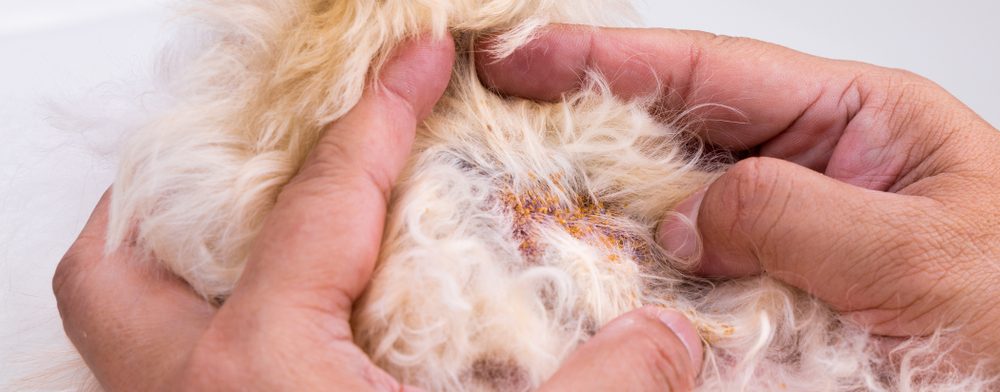
How to Treat Scabs on Your Dog’s Back
There are many treatment options available that can be very effective at treating crusty scabs on your dog’s back that you’ll want to know about.
1. Shampoos
If your dog has a fungal or bacterial infection, there are a number of shampoos and ointments that can work quite well to get rid of the scabs.
2. Fish Oil
Applying some fish oil to your dog’s skin can help with eliminating scabs that are caused by a nutritional deficiency.
3. Allergy Medication
Over-The-Counter antihistamine medication can be effective at treating skin irritation caused by allergies.
Conclusion
- A fungal infection can cause crusty scabs to form on a dog’s back, and they can be very serious.
- If your dog has an allergic reaction to food it eats or something in its environment, they could develop scabs and other things on their skin.
- Bacterial infections can also result in scabs on dogs. These infections usually result from open wounds due to injury or self-harming behaviors.
- Parasites like fleas, ticks, and mites are often to blame when it comes to blemishes on your dog’s skin, including scabs.
- If your dog isn’t being fed a proper diet, they could develop a nutritional deficiency that weakens their immune system. This can result in all sorts of skin conditions.
- A yeast infection is another potential cause of scabs on a dog’s back.
Frequently Asked Questions:
What do mites look like on dogs?
Mites are small creatures that can usually be identified under a microscope. On a dog’s skin, they look like little black dots, but they actually look like spiders. Among the other symptoms are excessive scratching, hair loss, and dandruff.
What does mange look like on a dog?
Symptoms include skin redness, itching, hair loss, sores and lesions. In localized cases you can see extreme concentration on a certain part of the dog’s body, in general cases the whole dog can be covered in redness.
How do I know if my dog has mange or allergies?
The symptoms of both are quite similar: skin redness, itching, hair loss, scabby, crusty, or scaly skin. Contact your veterinarian to have your puppy tested and identify the cause of the problems and get the right treatment.
